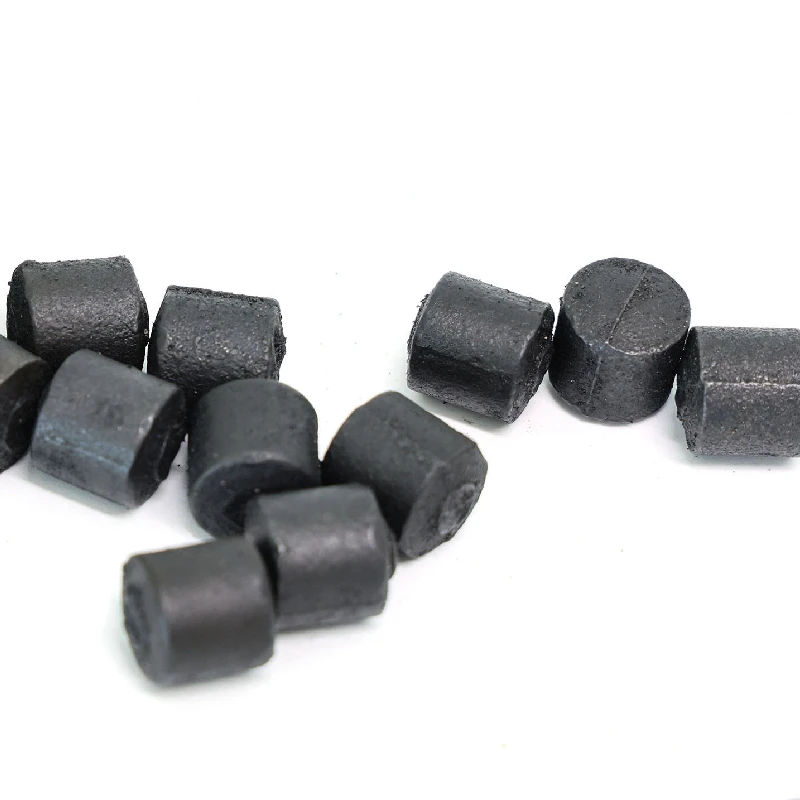Nov . 07, 2025 14:25 Back to list
Grinding Cylpebs: High Hardness, Low Wear | Factory Direct
Field Notes on High-Chrome Grinding Cylpebs
If you’ve spent time around finish mills or regrind circuits, you already know the quiet power of cylpeb geometry. The short story: higher surface area and better contact points often translate to tighter particle size distributions. The longer story—well, that’s what we’re getting into. From KIZUN Industry Zone in Luquan, Shijiazhuang, Hebei (a place I’ve visited more times than I care to admit), this product—“High chromium grinding steel forging”—is a workhorse for cement and mining operators who don’t like downtime, or waste.

Why high-chrome matters (and where it shines)
With 10%–28% Cr, these Grinding Cylpebs land squarely in high-chromium white iron territory—martensitic matrix, plenty of M7C3 carbides, and wear resistance that pays off in abrasive environments. You’ll see them in cement finish mills, mineral regrind circuits, power plant desulfurization lines, and even some chemical/pigment milling. Many customers say the biggest surprise is stability: less media breakage and a more predictable grind, week after week.
Specification snapshot
| Parameter | Typical Value (≈, real-world use may vary) |
|---|---|
| Material / Chrome content | High-chromium cast alloy, Cr 10%–28% |
| Processing type | Casting + controlled heat treatment (quench & temper) |
| Size range | 8×10 to 40×45 mm |
| Hardness | HRC 56–65 (cross-section uniformity ±2 HRC) |
| Density | ≈7.5 g/cm³ |
| Color / finish | Black (as-cast, blasted) |
Process flow (how the good ones are made)
Alloy selection → Melting and inoculation → Sand molding → Precision pouring → Shakeout and riser removal → Heat treatment (oil or air quench; temper for toughness) → Shot blasting → Dimensional and hardness checks → Sorting and packaging. Testing tracks with ASTM E18 (hardness), ISO 148-1 (Charpy, when specified), and microstructure per ASTM E407 etching. Some lots get retained-austenite checks via XRD when mills request it—helpful in hot clinker service.
Performance in the wild
- Cement finish mills: wear 20–50 g/t, service life 6–12 months depending on Blaine targets.
- Magnetite/hematite regrind: 70–120 g/t; better shape factor often improves classification efficiency.
- Power plant FGD: stable, low spalling rates; operators like the predictable charge top-up intervals.
One plant manager told me, “we switched from mixed media to Grinding Cylpebs in the second chamber and shaved 3–4 kWh/t off the energy in peak weeks.” Not every site will see that, but it tracks with what I’ve heard elsewhere.
Application and setup tips
- Best for fine grinding zones (second/third chamber, regrind mills).
- Charge level: aim 28%–34% v/v; top-up little and often to keep the size gradation smooth.
- Pair with classifying liners or partition grates; the cylpeb geometry thrives on controlled media trajectories.
Vendor comparison (field-notes version)
| Vendor | Chrome (≈) | Hardness uniformity | Lead time | Certifications |
|---|---|---|---|---|
| Chengda (KIZUN, Hebei) | 10–28% | Good (±2 HRC typical) | 3–5 weeks | ISO 9001; ISO 14001 |
| Vendor A (Global) | 18–22% | Very good | 6–8 weeks | ISO 9001, 45001 |
| Local Foundry B | 8–12% | Mixed | 2–3 weeks | Varies |
To be honest, the decision often comes down to liner design, mill speed, and power constraints. If you need higher Cr for very abrasive clinker or quartz-rich ores, push toward the 20–28% end. For milder duty, 10–18% does fine and saves cost.
Customization
Custom sizes (within 8×10–40×45 mm window), chemistry tweaks (Mo, Ni micro-additions), and heat-treatment curves are available. Lot traceability and third-party inspection can be requested. Packaging is usually 1-tonne bags or steel drums—your call.
Case snippets
- Cement plant, Southeast Asia: switched to Grinding Cylpebs in second chamber; Blaine +70–90 cm²/g at same kWh/t; wear dropped from 45 g/t to ~28 g/t.
- Iron ore regrind, Latin America: moved from 16–20 mm balls to 22×25 mm cylpebs; improved P80 from 90 μm to 74 μm with equal residence time.
Quality and compliance
Hardness tested per ASTM E18; chemical analysis via spectrometer (heat-by-heat). Impact (when specified) to ISO 148-1; cast wear performance references align with GB/T 17445 guidance for cast grinding media. Plants typically hold ISO 9001:2015 and ISO 14001:2015 certifications.
Authoritative citations:
[1] ASTM A532/A532M – Abrasion-Resistant Cast Irons.
[2] ASTM E18 – Rockwell Hardness of Metallic Materials.
[3] ISO 148-1 – Metallic materials — Charpy pendulum impact test.
[4] GB/T 17445 – Cast grinding media for mills.
[5] SME Mining Engineering Handbook, media selection and grinding theory.
-
Expert Insights on Fabrica de Molinos de Bolas: Industry Trends & Global Applications
NewsNov.24,2025
-
Expert Insights on Fabricantes de Bolas de Molienda de Acero: Global Applications & Trends
NewsNov.23,2025
-
Leading Fabricantes de Bolas de Molienda: Your Ultimate Guide to Grinding Balls
NewsNov.23,2025
-
Fabricante de Bolas de Molienda – Quality Grinding Balls for Efficient Industry
NewsNov.23,2025
-
Trusted Proveedores de Medios de Molienda for Efficient Industrial Grinding
NewsNov.22,2025
-
Proveedores de Bolas de Molienda: Your Guide to Top Grinding Ball Suppliers & Industry Insights
NewsNov.22,2025
Realted Products
















